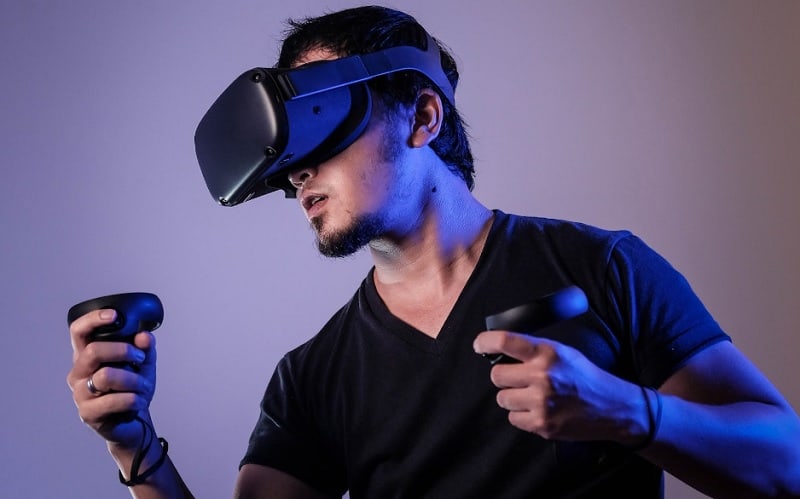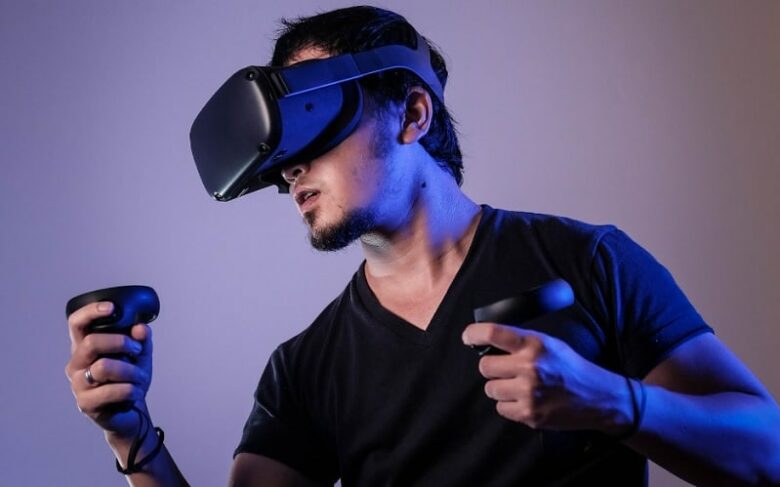Virtual reality (VR) technology is constantly evolving and growing in popularity, especially with recent advancements. Many technological innovations have enabled us to explore virtual worlds that were once unthinkable, from faraway galaxies to simulated gaming environments.
Thanks to these incredible leaps forward, users can now enjoy a fully immersive VR experience on any device that supports it – creating opportunities for countless hours of captivating exploration! In this article, we’ll take you through the journey of how we’ve gotten here and what breakthroughs helped bring us closer to achieving life-like virtual reality experiences.

The concept of Virtual Reality (VR) and its potential applications
Imagine being able to step into a completely different world, one that you could see, hear, and interact with in a way that feels completely immersive and real. That’s the power of Virtual Reality (VR). This exciting new technology has the potential to revolutionize the way we learn, work, and play.
From training simulations for complex tasks to virtual tours of far-off places, to completely immersive gaming experiences, the applications of VR are endless. With the ability to transport users to different environments and situations, VR has the power to open up new worlds and possibilities.
It’s an exciting time to be at the forefront of this rapidly growing field. There are many virtual reality companies to partner with if you want to take your business to the next level. If you’re an individual interested in exploring the possibilities of VR, there are also plenty of affordable and accessible options available.
How technology advancements are changing the playing field in VR
As technology continues to advance at an unprecedented rate, virtual reality (VR) is quickly becoming one of the most exciting developments in the tech industry. With every passing year, the technology behind VR continues to improve, allowing for more immersive and realistic experiences than ever before.
As a result, the playing field for VR is constantly evolving, with new advancements introducing new challenges and opportunities for developers and users alike.
From highly responsive motion tracking to ultra-realistic graphics, it’s easy to see why VR is quickly becoming a major player in the tech world. So what’s next for this rapidly growing industry? Only time will tell, but one thing’s for sure – the future looks incredibly bright for VR and its many applications.
How 5G connectivity is transforming VR experiences
The evolution of technology has brought us closer to truly immersing ourselves in alternate realities through virtual reality (VR). And with the advent of 5G connectivity, the potential for VR experiences to be truly transformative has skyrocketed. Fast, reliable, and without the lags that came with slower internet speeds, 5G connectivity has untethered VR, allowing users to roam free and truly become a part of the experience.
This technology has opened up a whole new world of possibilities for healthcare, education, and entertainment, and we can’t wait to see what’s in store.
In addition, the development of 5G is also driving advancements in VR technology itself, with faster processing speeds and higher resolution displays being possible. As we continue to push the boundaries of what’s possible with VR, 5G connectivity will play a crucial role in making these experiences more seamless and life-like.
The various types of hardware solutions that bring VR to life
Virtual Reality has taken the world by storm, and it’s no surprise that hardware solutions have been developed to make this new technology accessible to everyone. But with so many options available, it can be difficult to know where to start. From high-end devices like the Oculus Rift and HTC Vive to more affordable options like Google Cardboard, each comes with its own unique set of features.
The Oculus Rift, for example, boasts a high-resolution display and advanced tracking technology, while Google Cardboard is a simple, inexpensive option that anyone can use with a smartphone.
By breaking down the various types of hardware solutions that bring VR to life, consumers can make an informed decision that suits their needs and budget. If you’re interested in diving into the world of VR, there’s a hardware solution out there for you.
The power of cloud-based tools for virtual worlds
As technology advances, the world of virtual reality is becoming more and more realistic. In order to create these immersive virtual worlds, developers are turning to cloud-based tools to streamline their workflow and increase collaboration.
These tools allow for real-time editing and can handle large amounts of data, making complex projects possible. Additionally, the cloud-based aspect of these tools means that developers can access them from anywhere, making remote work more accessible.
Investigating the power of these cloud-based tools for virtual worlds is crucial for pushing the boundaries of what is possible in virtual reality and creating unforgettable experiences for users.
The ways companies are leveraging VR
As technology continues to evolve, companies are constantly looking for new and innovative ways to improve their training and education programs. One of the latest trends is the use of virtual reality (VR) technology to create immersive experiences that can simulate real-life scenarios for employees.
This approach allows workers to practice and perfect their skills in a safe and controlled environment, without any risk of harm or injury. From manufacturing and healthcare to hospitality and retail, a wide range of industries are now leveraging the power of VR to enhance their training programs and help employees reach their full potential.
As this exciting technology continues to advance, there’s no doubt that we’ll see even more companies adopting VR for education and training in the near future.

In conclusion, Virtual Reality (VR) is quickly becoming one of the most exciting and innovative technologies available today. From face-tracking technology to 5G connectivity, to cloud-based solutions, VR has the potential to revolutionize how we play, learn and work. It’s up to us to keep exploring the possibilities of this amazing technology and find new ways to use it in our everyday lives.
So why not take time out of your day to get creative with VR? Challenge yourself to think outside the box and experiment with some of these new capabilities. When you do, you’ll find that this rapidly developing virtual world may just be more powerful than you could ever imagine. Take action now and seize their potential before anyone else does.














Leave a Reply